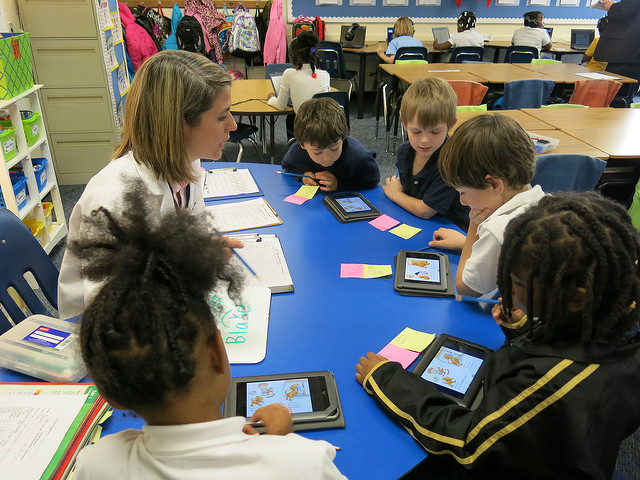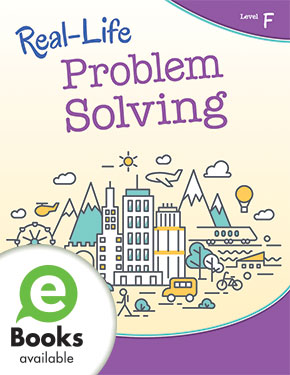Cooperative Learning: Making Group Work Productive
Classroom group work is an excellent opportunity for student learning, providing students the chance to engage in thoughtful discussion and create something together. But for teachers, successful cooperative learning requires planning. Deciding how to arrange the groups and which roles the members of the group should play are some of the important components of group activity planning.
To Mix or Not to Mix – That is the Question
There are various schools of thought (no pun intended) on how to best arrange student groups. While some contend that heterogeneous arrangements—grouping students of different abilities—are the best approach, others assert that homogenous groups—those that consist of students of similar instructional levels—are the best approach to foster student learning.
There are benefits and downsides to both kinds of grouping.
Heterogeneous Groups
Heterogeneous groups allow students to learn from one another. Lower-achieving students benefit from the skills and knowledge that the higher level students are imparting, and the higher-level students enhance their understanding by teaching the skills to their classmates. This dynamic helps to foster the very kind of learning teachers hope to achieve through cooperative learning.
For these reasons, Erick Herrmann, educational consultant and director of Academic Language Learning Institute, Inc., suggests that heterogeneous groups should consist of one high achieving student, two average level students, and one lower achieving student.
But heterogeneous groups have their critics as well. An evaluation of heterogeneous and homogeneous grouping found on Education World features honest testimony from teachers on the cons of this sort of dynamic.
One teacher wrote, “In our experience, the low-end kids tend to pull down the high-end kids, rather than the other way around. The class pace slows, and the teacher has to in effect devise two lesson plans for each period, one for the accelerated students and another for those who have low skills.”
Homogenous Groups
Instead, some teachers prefer homogenous groups.
Homogenous groups may be beneficial for teachers interested in differentiating the work, allowing them to teach individual students with differing learning skills and abilities at their own level. Homogenous groups also make it easier for the instructor to help students work on specific areas they need to improve. It allows the teacher to challenge students of the same skill level to develop more advanced skills.
However, some experts believe that groups consisting of students with lower learning abilities may have lower expectations and, therefore, remain stagnant at their learning levels.
It is perhaps because of the pros and cons of both settings that cooperative learning expert Robert E. Slavin determined that students learn best when they are grouped heterogeneously for the majority of the school day, but regrouped homogenously for one or two subjects. Successful grouping also requires continuous evaluation of students’ skills, with reassignment as a student progresses. After all, if the purpose of cooperative learning is for student advancement, it is imperative for instructors to monitor students regularly to ascertain whether advancement has in fact occurred.
Random Grouping
There are, of course, a variety of other ways to arrange student groups, many of which involve random selections. For example, teachers can assign numbers to each student and then announce that all “number ones” are in the same group, “number twos,” etc.
This arrangement has its own benefits because it allows students to get to know each other better on an academic and even a social level. It encourages communication between students that may not otherwise engage with one another. Additionally, it allows students to continually be challenged by having to learn to adapt to various learning styles and skillsets, and provides the opportunity for students to play various roles that fluctuate depending on the group dynamic.

Making Group Projects Work
While some students thrive in group settings, others prefer to work individually. Group projects can cause problems if some students work while others simply coast on the efforts of the rest of the group.
Fortunately, there are ways for instructors to prevent this. After groups are arranged, the instructor should indicate that each member of the group must play a role. For example, one student can serve as the recorder while another student will be the presenter. Another student can serve as the fact checker and a fourth will be the illustrator.
Assigning each member of the group a role is an effective way to guarantee that no one student is tasked with having to do the majority of the work. Likewise, varying roles permit students the opportunity to select tasks that best fit their learning styles.
While it is tempting for teachers to assign the roles to the students in each group, it may be even better to allow the students to decide amongst themselves. This can be an opportunity for students to become self-advocates as they vie for the role they feel they would best fill, and the critical thinking skills involved in delegating tasks based on skill and style are an added benefit.
Preparing for the Future
School should not simply serve to educate but to also prepare students for the real world. There are very few careers in which the work is entirely individual or team-based, and therefore, it’s good practice to utilize both individual and group work in the classroom. With careful planning, group work can aid in student learning and prepare students for careers that will likely expect employees to be functional in a team setting.

Make problem solving meaningful for students. Lessons feature kid-friendly topics such as movie marathons and summer fun to reinforce problem solving skills and understanding of math in daily life.
View Product →About the Author:

Raven Kraft served as a Language Arts middle school teacher in Florida for three years, and an Adjunct English professor at a Florida community college. She currently serves as a Composition instructor at a well-known technical school. She has a Master’s Degree in English from the University at Albany in Albany, NY.
Connect with Raven on LinkedIn!

